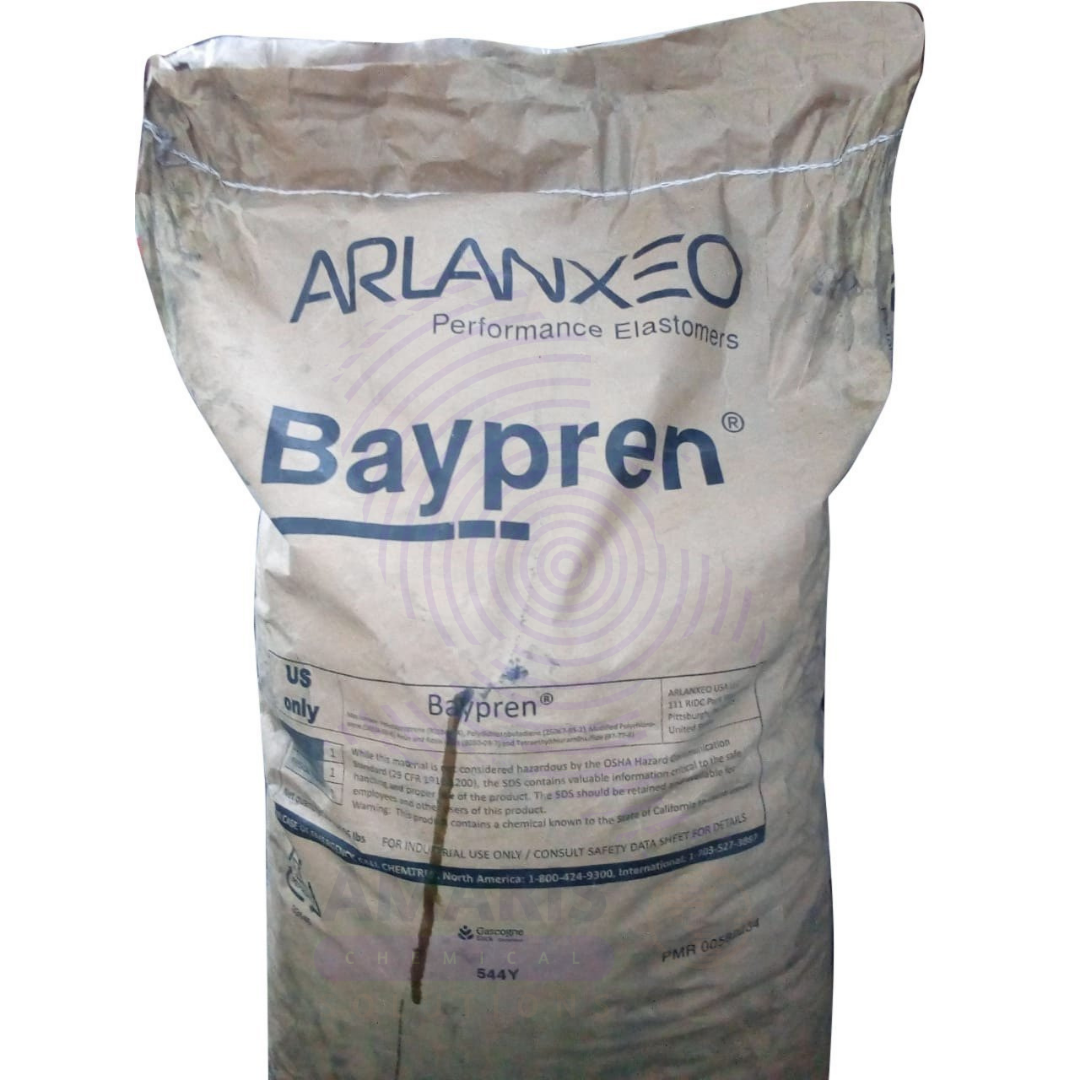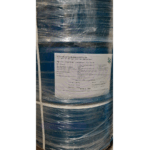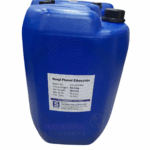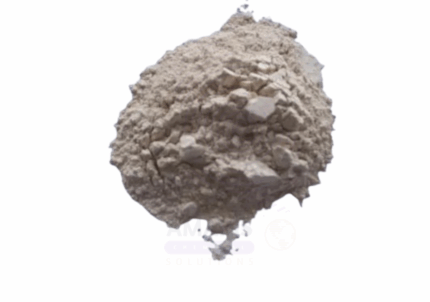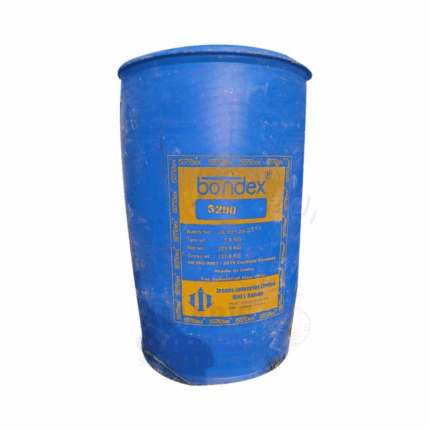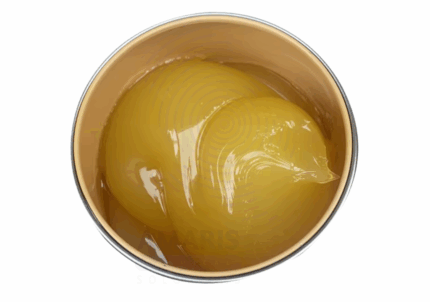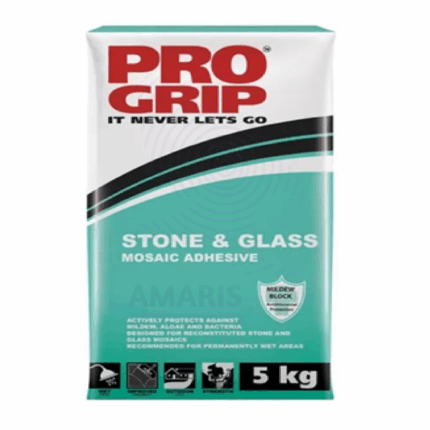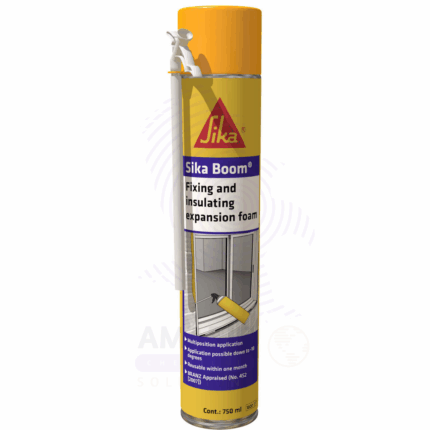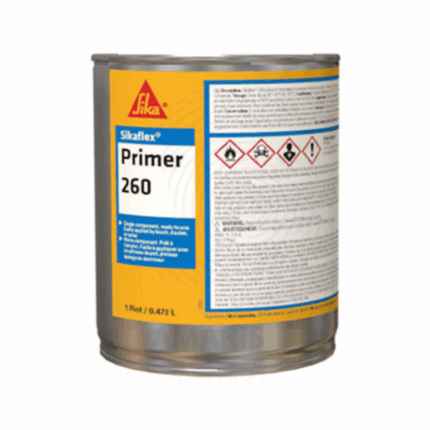Bayprene
Whatsapp Order
Bayprene is a high-quality, synthetic rubber polymer belonging to the class of nitrile butadiene rubbers (NBR). It is widely used for its excellent resistance to oils, fuels, chemicals, and abrasion, making it ideal for sealing, gasketing, hoses, and industrial applications where durability and chemical resistance are required. Bayprene exhibits good mechanical properties, high tensile strength, and resistance to swelling and degradation, especially in petroleum-based environments. It is commonly supplied as solid rubber sheets, molded parts, or raw polymer for compounding.
Description
Table of Contents
Toggle
Bayprene
Primary Uses
- Sealing and Gasketing:
- Used extensively in the manufacturing of oil seals, gaskets, and O-rings in automotive, aerospace, and industrial machinery due to its resistance to petroleum oils and fuels.
- Hoses and Tubing:
- Ideal material for fuel and oil handling hoses, hydraulic hoses, and flexible tubing in harsh chemical environments.
- Automotive Industry:
- Applied in fuel system components, brake system seals, and vibration dampening parts due to its durability and chemical resistance.
- Industrial Applications:
- Used for conveyor belts, diaphragms, and molded parts exposed to oils and solvents in manufacturing plants and refineries.
- Adhesives and Coatings:
- Employed in specialty adhesives and protective coatings where resistance to fuels and oils is necessary.
Secondary Uses
- Protective Gloves:
- Used in nitrile gloves production, offering resistance to punctures and chemicals in medical and industrial settings.
- Sporting Goods:
- Occasionally incorporated in synthetic rubber blends for grips and protective equipment.
- Sealants:
- Used as a component in sealant formulations for marine and construction industries requiring oil resistance.
- Electrical Insulation:
- Limited use as insulating material due to good dielectric properties and chemical stability.
KEY PRODUCT FEATURES
1. Basic Identification Attributes
- Chemical Name (IUPAC): Acrylonitrile butadiene copolymer
- Common/Trade Name: Bayprene
- CAS Number: 25038-81-7 (typical for nitrile rubber)
- HS Code: 4002.49.00 (Rubber and articles thereof)
- Molecular Formula: (C₄H₅N)_x·(C₄H₆)_y (copolymer composition varies)
- Synonyms: Nitrile Butadiene Rubber (NBR), Buna-N
2. Physical & Chemical Properties
- Physical State: Solid rubber (sheets, blocks, or molded parts)
- Color & Odor: Typically black or dark brown, characteristic rubber odor
- Melting Point: Does not have a sharp melting point; softens over range 160-190°C
- Density: ~1.0 - 1.2 g/cm³
- Solubility: Insoluble in water; soluble in aromatic and chlorinated hydrocarbons
- Mechanical Properties: Tensile strength ~15-25 MPa, elongation at break 300-600%
- Resistance: Excellent resistance to oils, fuels, and many chemicals; moderate resistance to heat and ozone
- Flammability: Flammable, but self-extinguishing when removed from flame
3. Safety & Hazard Attributes
- Hazard Class (GHS): Not classified as hazardous in solid form; dust/fume inhalation hazardous
- NFPA Ratings: Health 1, Flammability 2, Reactivity 0
- Exposure Limits: No specific limits, but dust may irritate respiratory system
- Reactivity: Stable under normal conditions; avoid strong oxidizers and high temperatures
- Incompatibilities: Avoid exposure to strong acids, bases, and oxidizing agents
4. Storage & Handling Attributes
- Storage Conditions: Store in cool, dry place away from heat, flame, and sunlight
- Container Type: Rolls, sheets, or blocks wrapped in polyethylene or other moisture-proof packaging
- Shelf Life: Typically 1-3 years if stored properly
- Special Handling: Use gloves to avoid skin irritation; minimize dust generation when cutting or grinding
5. Regulatory & Compliance Attributes
- Regulatory Status: Complies with international standards for synthetic rubbers
- Transportation: Not classified as hazardous for transport
- Waste Disposal: Dispose in accordance with local environmental regulations; avoid incineration without proper controls
6. Environmental & Health Impact
- Ecotoxicity: Low direct toxicity; synthetic polymer persistence in environment
- Persistence: Not biodegradable; stable polymeric material
- Carcinogenicity/Mutagenicity: No known carcinogenic or mutagenic effects
- Biodegradability: Non-biodegradable
SAFETY HANDLING PRECAUTIONS
Safety Handling Precautions
- PPE: Wear gloves, protective clothing, and eye protection when handling rubber sheets or powders.
- Dust Control: Avoid inhalation of dust when cutting or grinding; use local exhaust ventilation or respirators if necessary.
- Fire Safety: Keep away from ignition sources; have suitable fire extinguishers (foam, CO₂) nearby.
- Handling: Use mechanical aids for heavy rolls or blocks; avoid prolonged skin contact to reduce irritation risk.
- Storage: Store away from strong oxidizers and direct sunlight to prevent degradation.
First Aid Measures
- Inhalation: Remove to fresh air if dust inhaled; seek medical attention if respiratory irritation persists.
- Skin Contact: Wash with soap and water; seek medical advice if irritation occurs.
- Eye Contact: Rinse with plenty of water for at least 15 minutes; get medical help if irritation continues.
- Ingestion: Not expected; rinse mouth and seek medical advice if swallowed.
Firefighting Measures
- Fire Hazards: Flammable solid; produces toxic fumes including carbon monoxide and nitrogen oxides on burning.
- Extinguishing Media: Use foam, dry chemical powder, or CO₂ extinguishers. Avoid water streams that may spread fire.
- Special Precautions: Firefighters should wear full protective gear and self-contained breathing apparatus (SCBA).
- Preventive Actions: Store away from heat sources and oxidizers to prevent fire risks.
Related products
Acrytan SN
Bondex 5299
Bondex 5299 is a solvent-based, high-performance industrial adhesive formulated to provide strong, durable bonds on a wide variety of substrates such as metals, plastics, rubber, and composites. It appears as a clear to amber viscous liquid with a characteristic solvent odor. Known for excellent resistance to heat, moisture, and chemicals, Bondex 5299 cures by solvent evaporation to form a flexible, resilient bond. It is widely used in automotive, aerospace, electronics, and heavy machinery industries due to its reliable bonding strength and quick curing properties.
Desmocol
Desmocol is a trade name for Cocamido Propyl Betaine (CAPB), a mild amphoteric surfactant derived from coconut oil and dimethylaminopropylamine. It is widely used in personal care and cleaning formulations due to its excellent foaming, thickening, and conditioning properties. Desmocol is known for its skin-friendly nature, compatibility with a broad range of surfactants, and ability to reduce irritation potential in formulations. It appears as a viscous, amber-colored liquid or paste with a characteristic mild coconut odor.
Eagle Vam Veo( VV50/55)
Eagle VAM VEO VV50/55 is a water-based vinyl‑acetate–ethylene (VAM‑VEO) copolymer emulsion, formulated at 55% active solids. It presents as a milky-white, medium-viscosity liquid with a mild emulsion odor. This copolymer combines excellent film formation, adhesion, flexibility, and toughness, tailored for use in coatings, adhesives, sealants, and functional binders across multiple industries.
Marble Adhesive Glue
Marble Adhesive Glue Granite Glue, also known as Granite Glue, is a high-strength adhesive specifically formulated for bonding natural stones such as marble, granite, and other types of stone surfaces. It offers excellent adhesion, durability, and resistance to environmental factors like moisture, heat, and chemicals. This glue is commonly used in construction, interior decoration, and stone fabrication industries to securely fix stone slabs, tiles, and countertops. The adhesive provides a seamless and strong bond, facilitating the installation and repair of stone surfaces with high aesthetic and structural quality.
Pro Grip White Mosaic Adhesive Grout
Pro Grip White Mosaic Adhesive Grout is a premium-quality, ready-to-use adhesive and grout designed specifically for mosaic tiles and small-format tile installations. It provides excellent bonding strength, smooth application, and a durable white finish that enhances the appearance of tile joints. The product is resistant to water, mold, and stains, making it ideal for both indoor and outdoor use in areas such as kitchens, bathrooms, swimming pools, and decorative mosaic works.
Sika Boom Expanding Foam
Sika Boom Expanding Foam is a one-component, polyurethane-based, fast-curing foam designed for sealing, filling, insulating, and bonding applications in construction and renovation. It expands rapidly upon dispensing to fill cavities, gaps, and voids, providing excellent thermal and acoustic insulation. The foam adheres well to most common building materials such as wood, concrete, metal, and plastics. It is moisture-curing and offers good resistance to aging, shrinking, and water.
Sika Flex 260 Primer
Sika Flex 260 Primer is a high-performance, solvent-based primer designed to enhance adhesion of polyurethane and other elastic sealants on porous and non-porous substrates. It provides excellent bonding on surfaces such as concrete, metal, wood, and various plastics, ensuring durable and long-lasting sealant performance. The fast-drying formula allows for efficient application in construction and industrial sealing projects.


 Preservatives(food)
Preservatives(food) Flavor Enhancers
Flavor Enhancers Acidulants
Acidulants Sweeteners
Sweeteners Antioxidants
Antioxidants Colorants(food)
Colorants(food) Nutraceutical Ingredients (food)
Nutraceutical Ingredients (food) Nutrient Supplements
Nutrient Supplements Emulsifiers
Emulsifiers
 Collectors
Collectors Dust Suppressants
Dust Suppressants Explosives and Blasting Agents
Explosives and Blasting Agents Flocculants and Coagulants
Flocculants and Coagulants Frothers
Frothers Leaching Agents
Leaching Agents pH Modifiers
pH Modifiers Precious Metal Extraction Agents
Precious Metal Extraction Agents
 Antioxidants(plastic)
Antioxidants(plastic) Colorants (Pigments, Dyes)
Colorants (Pigments, Dyes) Fillers and Reinforcements
Fillers and Reinforcements Flame Retardants
Flame Retardants Monomers
Monomers Plasticizers
Plasticizers Polymerization Initiators
Polymerization Initiators Stabilizers (UV, Heat)
Stabilizers (UV, Heat)
 Antifoaming Agents
Antifoaming Agents Chelating Agents
Chelating Agents Coagulants and Flocculants
Coagulants and Flocculants Corrosion Inhibitors
Corrosion Inhibitors Disinfectants and Biocides
Disinfectants and Biocides Oxidizing Agents
Oxidizing Agents pH Adjusters
pH Adjusters Scale Inhibitors( water)
Scale Inhibitors( water)
 Antioxidants(cosmetic)
Antioxidants(cosmetic) Emollients
Emollients Fragrances and Essential Oils
Fragrances and Essential Oils Humectants
Humectants Preservatives
Preservatives Surfactants(cosmetic)
Surfactants(cosmetic) Thickeners
Thickeners UV Filters
UV Filters
 Fertilizers
Fertilizers Soil Conditioners
Soil Conditioners Plant Growth Regulators
Plant Growth Regulators Animal Feed Additives
Animal Feed Additives Biostimulants
Biostimulants Pesticides (Herbicides, Insecticides, Fungicides)
Pesticides (Herbicides, Insecticides, Fungicides)
 Active Pharmaceutical Ingredients (APIs)
Active Pharmaceutical Ingredients (APIs) Excipients
Excipients Solvents(pharmaceutical)
Solvents(pharmaceutical) Antibiotics
Antibiotics Antiseptics and Disinfectants
Antiseptics and Disinfectants Vaccine Adjuvants
Vaccine Adjuvants Nutraceutical Ingredients (pharmaceutical)
Nutraceutical Ingredients (pharmaceutical) Analgesics & Antipyretics
Analgesics & Antipyretics
 Analytical Reagents
Analytical Reagents Solvents(lab)
Solvents(lab) Chromatography Chemicals
Chromatography Chemicals Spectroscopy Reagents
Spectroscopy Reagents microbiology-and-cell-culture-reagents
microbiology-and-cell-culture-reagents Molecular Biology Reagents
Molecular Biology Reagents Biochemical Reagents
Biochemical Reagents Inorganic and Organic Standards
Inorganic and Organic Standards Laboratory Safety Chemicals
Laboratory Safety Chemicals Specialty Laboratory Chemicals(Special Laboratory Equipment)
Specialty Laboratory Chemicals(Special Laboratory Equipment)
 Demulsifiers
Demulsifiers Hydraulic Fracturing Fluids
Hydraulic Fracturing Fluids Scale Inhibitors(oil)
Scale Inhibitors(oil) Surfactants(oil)
Surfactants(oil) Drilling Fluids
Drilling Fluids
 Dyes and Pigments
Dyes and Pigments Bleaching Agents
Bleaching Agents Softening Agents
Softening Agents Finishing Agents
Finishing Agents Antistatic Agents
Antistatic Agents
 Admixtures
Admixtures Waterproofing Agents
Waterproofing Agents Sealants and Adhesives
Sealants and Adhesives Curing Compounds
Curing Compounds Concrete Repair Chemicals
Concrete Repair Chemicals Anti-Corrosion Coatings
Anti-Corrosion Coatings
 Surfactants(cleaning)
Surfactants(cleaning) Builders
Builders Enzymes
Enzymes Solvents (Cleaning)
Solvents (Cleaning) Fragrances
Fragrances
 Electronic Chemicals
Electronic Chemicals Catalysts
Catalysts Lubricants
Lubricants Photographic Chemicals
Photographic Chemicals Refrigerants
Refrigerants Automotive chemicals
Automotive chemicals Pyrotechnic Chemicals
Pyrotechnic Chemicals
 Biodegradable Surfactants
Biodegradable Surfactants Bio-based Solvents
Bio-based Solvents Renewable Polymers
Renewable Polymers Carbon Capture Chemicals
Carbon Capture Chemicals Wastewater Treatment Chemicals
Wastewater Treatment Chemicals
 Pigments
Pigments Solvents(paint)
Solvents(paint) Specialty Coatings
Specialty Coatings Binders/Resins
Binders/Resins Additives
Additives Driers
Driers Anti-Corrosion Agents
Anti-Corrosion Agents Functional Coatings
Functional Coatings Application-Specific Coatings
Application-Specific Coatings
 Fresh Herbs
Fresh Herbs Ground Spices
Ground Spices Whole Spices
Whole Spices Spice Blends
Spice Blends Dried Herbs
Dried Herbs
 Leavening Agents
Leavening Agents Dough Conditioners
Dough Conditioners Flour Treatments
Flour Treatments Fat Replacers
Fat Replacers Decoratives
Decoratives Preservatives(baking)
Preservatives(baking)
 Plasticizers & Softeners
Plasticizers & Softeners Reinforcing Agents
Reinforcing Agents Adhesion Promoters
Adhesion Promoters Vulcanizing Agents
Vulcanizing Agents Antidegradants
Antidegradants Blowing Agents
Blowing Agents Fillers & Extenders
Fillers & Extenders Accelerators & Retarders
Accelerators & Retarders